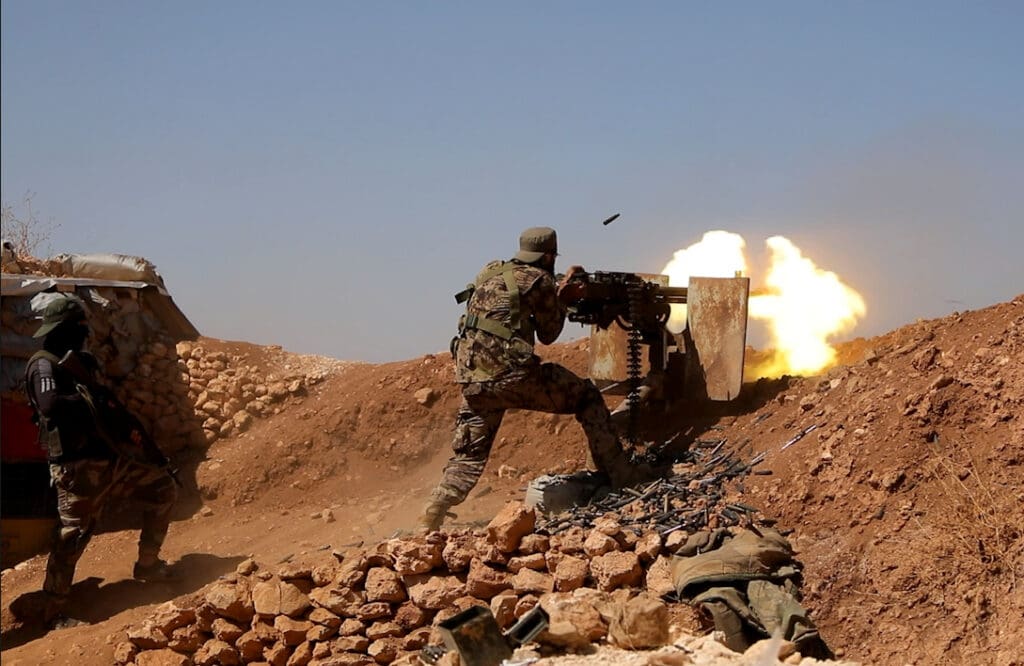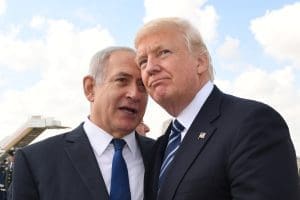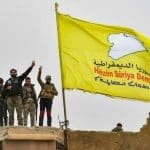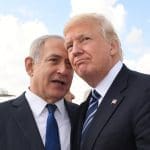The “Democratic Autonomous Administration” led by the Kurds in the north and east of Syria is going through a serious test with the Arab tribes. Deir al-Zor, with its oil and gas fields, is the most important fault line under the autonomous administration. A partial tribal rebellion that broke out in 2023 was repeated on August 7, 2024.
#The “Tribes and Clans Army,” affiliated with the leader of the Uqaydat tribe, Sheikh Ibrahim Khalil al-Hafel, crossed to the east of the Euphrates from the towns of Mayadin, Albukamal, and Ashara and attacked the Syrian Democratic Forces (SDF) in at least eight towns. While the SDF was dispatching forces from the north, Americans also intervened with fighter jets, drones, and helicopters. Then the tribal army had to withdraw from the places it entered. The clashes came within five kilometers of the American base that guards the al-Omar oil field and Conoco natural gas facilities.
According to the claim of Syria TV (the channel of the Syrian opposition based in Istanbul) tribal forces were trained in the camps of the Iranian Revolutionary Guards. Iranians worked with the local unit of the Syrian military intelligence for this operation. Hafel’s fighters were joined by the National Defense Forces (NDF) which consists of militias organized in regions where the Syrian army was inadequate during the armed rebellion that started in 2011. Some tribal sheikhs, such as Farhan al-Marsumi, the leader of the Marasima tribe, who founded the Muntasir Brigade with the support of Iran, also took part in the attack. Saudi news outlet, Asharq al-Awsat, claimed that the plan was prepared by Iranian Revolutionary Guards and Hashd al-Shaabi officers.
The SDF, on the other hand, held government forces and groups affiliated with the NDF responsible for the attack, without implicating Iran. They also claimed that the attack was launched on the orders of Syria’s Director of General Intelligence Hussam Luka. Forces of the SDF surrounded the areas controlled by the Syrian government in Al-Hasakah and Qamishli to withdraw its forces from Deir al-Zor. Russians stepped in to lift the siege.
The autonomous administration prefers to describe the developments as a “gang attack” rather than a “tribal rebellion.” ) The SDF press center is trying to show that this is not a tribal uprising, citing statements from Arab tribal representatives from different regions expressing support for the SDF.
The Autonomous Administration believes that Syria, Iran, and Turkey are behind the attack, although this is not reflected in the SDF’s official statement. While the tribal leaders who support opposition forces in the countryside of Aleppo and Raqqa are within Turkey’s sphere of influence, the tribes in Deir al-Zor are historically linked to Saudi Arabia. However, Ahrar al-Sharqiyya and Jaish al-Sharqiyya, which originate from Deir al-Zor, operate in Turkey’s Euphrates Shield and Olive Branch operations. These organizations can open channels of influence to Turkey if they want to return to Deir al-Zor one day.
Parallel to the Riyadh-Ankara normalization, Turkey may have hoped for a reversal of the Saudi role in encouraging Arab participation in the SDF. But there is reason to doubt that the Saudis would engage in something that would anger the United States. While there is no concrete evidence of Turkish involvement in the rebellion, Turkey is taking advantage of the situation. In accordance with the last two rebellions, the SNA has been mobilized on the northern fronts. The escalation in the north makes it difficult for the SDF to shift power to the south.
BATTLES OVER TRIBES
Although the suppressed rebellion is limited to one or two tribes, it has the potential to undermine the partnership with the Kurds from other tribes that support the SDF. The fact that external forces are behind the tribal army does not negate internal conflicts. It may be misleading to view statements of support for the SDF as unwavering loyalty. When it comes to the world of tribal relations, nothing may be as it seems. Concerns about protecting financial resources, security, and tribal order drive relations. The alliance is established in whichever power equation guarantees these three priorities.
In addition, tribes are not monolithic and contradictory attitudes may emerge from within a tribe.
One branch of the same tribe may form an alliance with the Kurds, another with the Syrian state, and another with Turkey through the Syrian National Army (SNA). There may also be no consistent continuity in alliance relations. For example, the leader of the Baqara tribe, Nawaf al-Bashir, worked with the Saudis. After the uprising started in 2011, he joined the opposition and settled in Istanbul. Five years later, he regretted it and returned to Syria, where he founded the Baqir Brigade with Iranian help. The Baqir Brigade was also mobilized against the SDF during the tribal uprising in 2023.
In general, when the “Arab Spring” erupted in 2011, the tribes in Deir al-Zor, where the Islamists were strong, embraced the Free Syrian Army (FSA). This was a reflex in anticipation of regime change. In 2014, when the FSA was wiped out by the Islamic State of Iraq and Syria (ISIS), tribal leaders hired the newcomers. But ISIS threatened the status of tribal sheikhs, took control of resources, and shot those who did not pledge allegiance. As ISIS was defeated by the US-backed SDF, tribal leaders adapted to the new situation. American reassurances on the one hand, and Saudi incentives with traditional ties to the tribes on the other, have facilitated Arab participation in the SDF. The Deir al-Zor Military Council, which was formed within the SDF to manage security in the region, is predominantly composed of the Uqaydat, Shaitat, and Baqara tribes.
As Deir al-Zor is next in the battle against ISIS after Raqqa, the search to attract tribes to their side has intensified. On June 3, 2018 the Syrian government gathered tribal leaders in Aleppo and asked for their loyalty. 70 representatives attended the meeting titled “Syrian Tribes Against Foreign and American Intervention.” The tribes spoke of resistance to end the Turkish and American occupation. A similar meeting was held in Hama in January 2019 with 1,500 participants.
From the border crossing of Al-Bukamal, the Iranians opened Huseiniyahs and penetrated tribes such as Baqara, Mashahda, and Merasima, who claimed to have ties with Ahl al-Bayt. With Iranian support, brigades with the names Hussein, Abu’l Fadl al-Abbas, Sayyidah Zeinab, Hashimiyyun, Muntasir and Uqaydat Lions emerged on the Euphrates.
Turkey, on the other hand, acted earlier to organize the tribes. The first meeting with the tribes was held in Istanbul from January 10 to 12 in 2017. In the second meeting on December 21, 2018 in Urfa with 150 tribal representatives, the Democratic Union Party (PYD) and the People’s Protection Units (YPG) stood out as enemies, accompanied by accusations of “occupier” and “deportation.” In contrast, the Kurds held a tribal meeting in Ain Issa on May 3, 2019. They called for a decentralized solution for all of Syria on the basis of democratic autonomy. Damascus called this meeting a “betrayal.”
The Russians wanted the Kurds to go after ISIS in Raqqa and Deir al-Zor with the Syrian army, not the Americans. The Syrian army established a joint operations room with the YPG near Raqqa in July 2017, while the Russians pledged support to the Kurds for operations east of the Euphrates at a meeting in Deir al-Zour in December 2017. ) But these steps did not make a real partnership possible, nor did they prevent the Kurds from cooperating with the US. The Kurds wanted to focus on the benefits of a partnership with the US. Damascus, on the other hand, was not keen on a partnership that would legitimize the SDF, which would not give up on the US.
IS THE US INTERESTED IN THE KURDISH PROJECT?
During my travels in 2017 and 2019, in meetings with Kurdish representatives in Qamishli, Hasakah, and Kobani, I took note of the calculus behind the decision to go all the way with the US:
- Going down to the Arab regions could deepen the Kurds’ partnership with the US, and even make it permanent.
- Partnership with the US could lead to political recognition for the autonomous administration.
- The inclusion of Arab-dominated regions in autonomy strengthens the perception that this is a model for Syria as a whole.
- Partnership with the tribes could open the doors to the Gulf.
- Control over oil and gas fields can change the rules of the game and solve financing problems.
- Entering the Euphrates line also means controlling the hydroelectric power plant and dams.
- This can provide strategic advantages.
- A complete defeat of ISIS could win the SDF global support.
Of course, as geographical control expanded towards Arab regions, the definition of “Rojava,” which Kurds who follow Öcalan use to mean “Western Kurdistan,” was removed from the “Social Contract.” The “Rojava Democratic Autonomous Administration,” based on the canton system in Afrin, Kobani, and Jazeera, was transformed into the “Rojava and Northern Syria Democratic Federal System,” then into the “Northern Syria Democratic Federation” and finally into the “Northern and Eastern Syria Democratic Autonomous Administration.”
The goals the US focused on had nothing to do with the Kurdish calculations. Turning the region into a jihadist incubator with the wars it waged, the US was on the one hand breaking the back of Syria, and on the other hand consolidating its global leadership under the guise of the war against ISIS. However, there was no clarity on the continuation of this policy under President Barack Obama. When his successor Donald Trump decided to withdraw from Syria in 2019 after President Tayyip Erdoğan pushed for it, debates among the American political elite provided some clarity. Trump, who first gave way and then stopped Turkey’s Operation Peace Spring, was convinced to keep troops in Syria on four grounds:
- Not allowing the rebirth of ISIS.
- Maintaining pressure on Syria and preventing its victory with the help of Russia and Iran.
- Cutting Iran’s arms and securing Israel.
- To guard oil and gas, that is, to deprive Syria of its most important resources.
On the other hand, this process radically changed the Syrian government’s view of Kurdish actors. There were three main reasons for their fracture: collaboration with the occupying power, the usurpation of energy resources, and the preparation to divide the country through a federative structure. This was the underlying language that changed from the YPG “defending the country’s territory with weapons provided by Syria,” to the “traitor SDF.”
Shift in Tribal Perspective: SDF Transforms from “Protector” to “Occupier”
In fact, it was risky for the Kurds to go as far as Tabqa, Raqqa, and Deir al-Zor after Manbij and Ain Issa. Soon there were accusations that the Kurds were in control, that decisions were made by Kurdistan Workers’ Party cadres from Qandil, that Arab participation was symbolic for getting legitimacy, that Arabs were not given jobs, that Deir al-Zor was deprived of oil revenues, that operations against ISIS cells were causing grievances, and that prisons were filled with Arabs. Protesters in April 2019 chanted slogans or held banners saying “No to the Kurdish occupation,” “Stop the arrests,” and “Kurds are stealing our oil.” In June 2019, Hajim al-Bashir, a leader of the Baqara tribe, whose house was raided by the SDF, called for a “rising up against the Qandil cadres.” The Uqaydat tribe, which is powerful in the Al-Omar oil basin, asked the US to give it control, while the Bukhabur tribe declared war on the SDF.
All this shows how the wind will shift in the event of instability and a disruption in the balance of power. Unresolved problems form the infrastructure for this. Although the first rebellion in 2023 was triggered by a conflict of interest, it also has this kind of infrastructure. At the time, the commander of the Deir al-Zor Military Council, Ahmed al-Khalil (Abu Hawla), was detained along with his men on charges of collaborating with the enemy, involvement in drug trafficking, enabling the mobilization of ISIS cells, and abuse of office for benefits. This prompted Uqaydat, to which Abu Hawla’s tribe al-Baqir belongs, to mobilize against the SDF. The Americans intervened and prevented other tribes from switching sides, while providing military support to the SDF to put down the rebellion. And Hafel returned a year later with a better equipped tribal army.
REGIONAL AND INTERNAL CONFLICT DYNAMICS
The US making room in the east of the Euphrates is part of a larger showdown not only in Syria but also in the Middle East. Iran and Syria’s priority is to remove the Americans from the region. Iran is trying to put pressure on the US with the militias deployed on the Euphrates line, while Syria is using the tribal card. This card is gradually gaining a “military” character. In a regional confrontation in the shadow of Gaza, the American bases in Iraq and Syria are marked as the main targets.
Even though it shares airspace with the US on the Euphrates line, Russia does not miss positions that would overwhelm American forces. In 2019, the Russians took advantage of the US withdrawal from places like Kobani and then stopped Turkish military intervention in order to increase the Syrian army’s presence east of the Euphrates.
Russia’s joint monitoring operations with Turkey along the M4 road also include the perspective of disrupting the status quo in favor of the Syrian state. Despite this, the US did not deviate from its position of controlling hydrocarbon resources and supporting the SDF. As Turkey seeks to normalize relations with Syria recently, it aims to end the autonomous administration together. Ankara is offering Damascus a partnership against the so-called “terror corridor,” assuming that Washington will not stop supporting the SDF. Assad believes that once the Americans withdraw, they can solve the problem east of the Euphrates, perhaps without resorting to military means as Turkey offers. Turkey, for its part, has played the game the Americans want against Assad, but is counting on the instability that will lead to the US withdrawal.
WHERE IS THE EXIT?
To summarize, the Arab uprising is being driven by both internal dynamics and external factors. This process puts the Arab-Kurdish partnership, and thus the democratic autonomy model, into turbulence. The most important trump card of the autonomous administration against disruptive factors or temptations was the effort to include different ethnic and religious groups in the administration. Co-chairmanship and quota systems were important tools in this regard. In addition, it was able to ensure the loyalty of the tribes to the extent that it could share the prosperity and ensure security. But it could not achieve unity among Kurds, nor could it encompass all Arabs and Assyrians. Ideological commonality also remained on the surface. The replacement of the leaders of the Syrian Arab Republic (Hafez al-Assad and Bashar al-Assad) by a Kurd from Turkey (Abdullah Öcalan who imprisoned in İmralı) on wall portraits, the increase in demonstrations with the theme of “freedom for Öcalan,” and the focus on spreading Öcalan’s political ideology push the limits of Arab nationalism.
The democratic autonomy model is not a blank white sheet of paper. Deir al-Zor aside, in mixed Kurdish-Arab areas such as Qamishli and Hasakah, relations are characterized by historical antagonisms. In the 1930s, the headline-grabbing sensitivities in the north over the “Kurdish belt is forming” were assuaged in 1962 with the “Arab Belt” project. Decades later, the concern about the “Kurdish Belt” returned. (For detailed reading reference: “Rojava: Kürtlerin Zamanı”, Fehim Taştekin, İletişim, İstanbul, 2006)
Disruptive interventions are exceeding the capacity of the autonomous administration. The antidote against such turbulences is decentralized, transparent, libertarian, egalitarian, and participatory democratic governance. As long as they can fill autonomy with these, the antidote can work. Otherwise, fragilities can trigger a collapse accompanied by conflicts of interest and foreign interventions.






